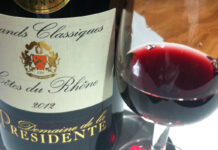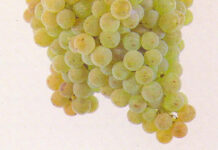Luke Richardson is a sommelier who has worked in a range of venues across the UK. In his column for SLTN he shares his thoughts on all things wine-related and answers your questions about wine. If you have a question for Luke email it to sltn@peeblesmedia.com

Hello again all!
I thought that this time around seeing as we’re knocking on the door of summer I would talk a little about rosé wines.
Oft underrated and more often misunderstood, they are still an important facet of any wine list, and choosing them can be a difficult and, in terms of lost revenue at least, costly experience.
There are two very different styles of rosé wine – one, a blend of both red and white wines and the other, made from the clear juice of a red grape variety which is then pushed through its skins – a method the French refer to as ‘saigneé’, or bleeding. You may be suprised to know that all the juice of your favourite red wine is actually clear or white – all the colouration comes from the skins of red grapes coming into contact with the juice, most often macerated whilst the wine is fermenting. Rosés made by this method just have less time in contact with the juice and, therefore, less colour.
I’ll speak briefly about the first type of rosé as these wines are, in my opinion at least, of a lesser quality than the second, and somewhat more manufactured.
There are some very accessible and fruity rosés of this style, widely available from most wine-producing countries, so the choice is huge. I would always look at red grape varieties that do well in that country, if not indigenous to it – like Tempranillo in Spain, or Grenache in France, Shiraz in Australia, and so on. They tend to be all about the fruit with not much body behind and varying levels of acidity depending on how sweet or dry they are. If you are to have more than one rosé available this would more than likely be your best value offering – circa £5 plus VAT gets you something pretty palatable.
The second style – wine made from clear grape juice pushed through its skins – is a far higher quality product on the whole and has many different styles so I’ll just concentrate on the two main styles: light or medium-bodied.
Light-bodied rosés are normally made from light-bodied red grapes like Pinot Noir – crunchy strawberry or raspberry fruit with a hint of blackcurrant and a refreshing finish, best served very cold. For a good value option, Chile makes some decent Pinot rosé – circa £6.50 plus VAT but for the really good stuff you’re more than likely looking to Sancerre – not much change from £10 or £11, great with lighter game or poultry, or just for drinking in our balmy Scottish summer sun!
Medium-bodied rosés make up the majority of the volume and can be made from an abundance of grape varieties – Grenache, Cinsault, Merlot to name a few. For good value, there are some pretty decent Carmenere rosé in Chile, some Malbecs from Argentina and also the aforementioned Tempranillo of Rioja fame in Spain. Again expect a fair amount of fruit, but these wines have a little more body and a little less acidity, thereby seeming more textured in the mouth. They match well with mixed fish grills, light meat salads and cured meats and salamis. Expect to pay around £6-£7 for a decent example.
For something a bit more premium, look no further than the salmon pink wines of Provence – which could easily be described as the spiritual home of rosé. Making up around 75% of production, and using Grenache, Cinsault, Mourvedre and Syrah mainly, these wines start around £8.50 plus VAT but the best are more like £10 plus VAT. More often than not, these wines have aromas of strawberries and cream and a palate of redcurrants, cranberry and the lightest hints of more dark fruit coming through on the finish, sometimes with a touch of spice in the tail.
Bouillabaisse, the classic Provençal mixed fish soup, is the ultimate partner but you can throw a huge amount of different foods at these wines and they stand up surprisingly well to the task. They are also a pleasure to drink on their own – and the higher the quality, the less the after effects felt the next day!
Happy rosé hunting!



















